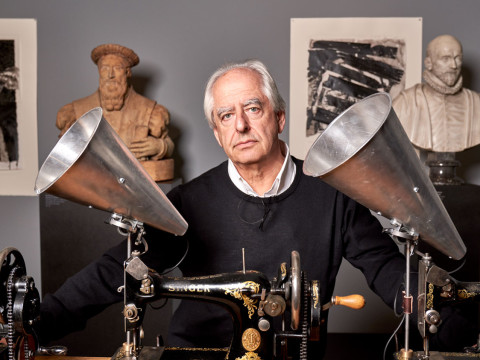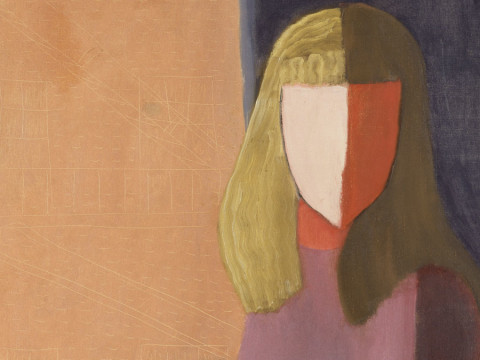
Richard Diebenkorn: a beginner’s guide
By Tom Jeffreys
Published on 10 February 2015
This March the RA celebrates the fascinating career of Richard Diebenkorn, one of the great twentieth-century masters of American painting.
Diebenkorn is rightly regarded as one of the most significant artists in post-war America, but this is the first major exhibition of his work in the UK for over 20 years. For those new to Diebenkorn, here are seven key facts to kick-start your appreciation of a unique talent.
Big in America
When Barack Obama moved into the White House in 2009, he selected for his living quarters a large, brightly coloured abstract painting by Richard Diebenkorn. This is just one example of the esteem with which Diebenkorn is held in his native country, where he is considered one of the most important American artists of the twentieth century. His work can be found in many of the country’s leading public and private collections, such as the Museum of Modern Art in New York, Brooklyn Museum and the San Francisico Museum of Modern Art, all of which have loaned work for our exhibition.

US President Barack Obama adjusts his tie in the Yellow Oval Room of the White House, May 19, 2010. Richard Diebenkorn's painting 'Berkeley No. 52' is reflected in the mirror
Not so big in the UK
Here in the UK, Diebenkorn does not have such levels of public recognition. In part this might be a question of geography. While we are familiar with the big names of the east coast scene – Pollock, de Kooning et al – the artists from the west coast, where Diebenkorn lived and worked, remain less familiar in the UK. This is also due to a lack of exposure: it’s been 24 years since his last major exhibition in this country. Nonetheless, he is held in high regard by his fellow artists and those in the know: Royal Academicians David Hockney, Ian McKeever and Barbara Rae have all expressed their admiration for different aspects of his work, and he was made an honorary Royal Academician in 1992, shortly before his death. McKeever’s article in the forthcoming issue of RA Magazine (published 1 March) is a fascinating response by one artist to the work of another.

Abstract Expressionism
One of the most distinctive aspects of Diebenkorn’s career is the way it can be divided into three clear phases. He first emerged as an artist of significance in the 1950s, as the Abstract Expressionism pioneered by the likes of Pollock and de Kooning was making waves in the east coast art scene. Diebenkorn flew the flag for the movement out west in Berkeley, Urbana and Albuquerque, alongside the likes of Clyfford Still. During this period he produced a range of energetic, colourful works that Thomas Williams, writing in Artists & Illustrators, has described as “among the most dynamic and brilliant of his career”.

The figurative revolt
In the mid-1950s, however, Diebenkorn took a very different path. His return to the San Francisco Bay area followed three years in New Mexico and Illinois, and he continued pursuing abstract painting for the next few years. But by 1956, he completely abandoned Abstract Expressionism in favour of figurative painting – distinctly out of fashion at the time. It was a move that provoked outrage. Fellow Californian artist Ernest Briggs accused him of being a "moral sell-out." But it also marked Diebenkorn apart as an artist unafraid to follow his own artistic impulses, whatever the prevailing winds of the period. Very soon, he became equally well known and successful as a Bay Area Figurative artist. As our exhibition demonstrates, however, for Diebenkorn, figuration was not some quixotic decision but a logical extension beyond the self-imposed limits of abstraction.
Ocean Park
The late 1960s marked the beginning of the final phase of Diebenkorn’s career. Following his move to Santa Monica in order to take up a professorship at UCLA in 1967, Diebenkorn returned to abstraction in a sequence of works now known as the Ocean Park series. These geometric abstractions became the focus of Diebenkorn's work for two decades. The paintings are among the most important in recent art history and have been described by the Boston Globe as “some of the most beautiful works of art created in America or anywhere else since the Second World War”.

European Modernism
Although these three phases may at first sound disconnected, two clear threads run through Diebenkorn’s career. The first is the strong relationship that all his work has with the great figures of European Modernism – especially Cézanne, Matisse, and Mondrian, for whom he had a deep admiration. Diebenkorn travelled across Europe between 1964 and ’65 and the influence of works such as Matisse’s View of Notre-Dame (1914) is clearly visible in the subsequent Ocean Park series.

The poetics of place
The second continuous thread is Diebenkorn’s sensitivity to place: changes in his life frequently led to changes in his work. “Very often,” Diebenkorn has said, “if you go to the locale where an artist works, you’ll suddenly really know that you’re in this person’s area.” He cites the Arles of Van Gogh and the Florence of Piero della Francesca, but he may just as well have been talking about himself. Few artists can have captured the unique space and light of California quite like Richard Diebenkorn.
Richard Diebenkorn is in The Sackler Wing at the RA from 14 March — 7 June 2015.
Tom Jeffreys (@tomjeffreys) is a writer, editor and curator.
Related articles

A beginner's guide to William Kentridge
19 July 2022

A beginner's guide to Milton Avery
12 July 2022

The truth in Francis Bacon's work
19 November 2021

Nature and myth in art
30 August 2021

How to paint 'en plein air' like Hockney and Constable
24 August 2021

In 60 seconds: Waterhouse's ‘A Mermaid’
2 February 2021